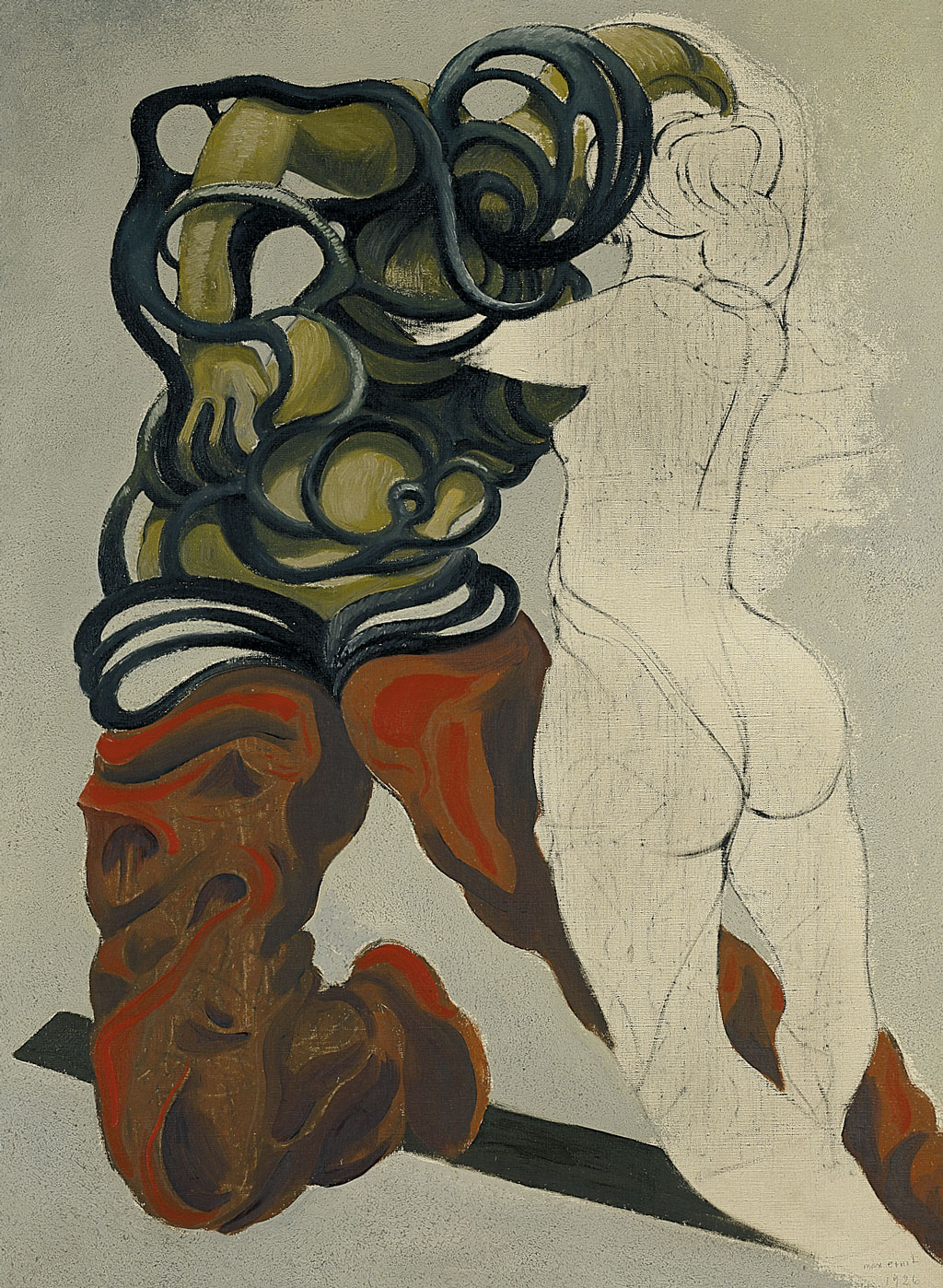Ernst, Max
La carmagnole de l’amour, 1926
Oil and drawing on canvas
101 x 73,5 cm
Acquired in 1999

In the late 1920s, the motif of embracing bodies and their balancing act between brutality and passion, movement and inertia, emergence and disappearance, enriched the pictorial world of the Rhenish painter Max Ernst, who lived in France at the time. The woman’s transparent body, drawn with a few brushstrokes, begins to dissolve in the man’s upper torso, which is surrounded by a supporting structure. The indefinite pictorial space, the unstable position of the couple, the evenly applied gray of the pictorial ground, and the light drawing of the woman’s body leave the picture in a state of suspension: between intimation and completion, drawing and painting, black-and-white and color, figure and ground.
The painting was acquired by the Friends in 1999 from the heirs of a paint merchant and plumber from Brussels who had installed a bathroom for René Magritte in the late 1930s and had been “remunerated” with this painting by Max Ernst. A handwritten note confirms this deal.
